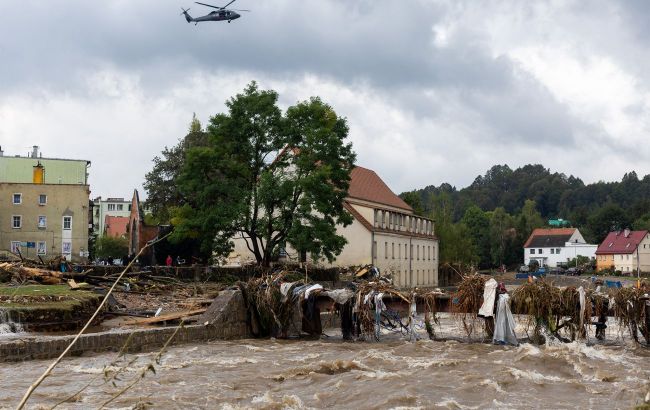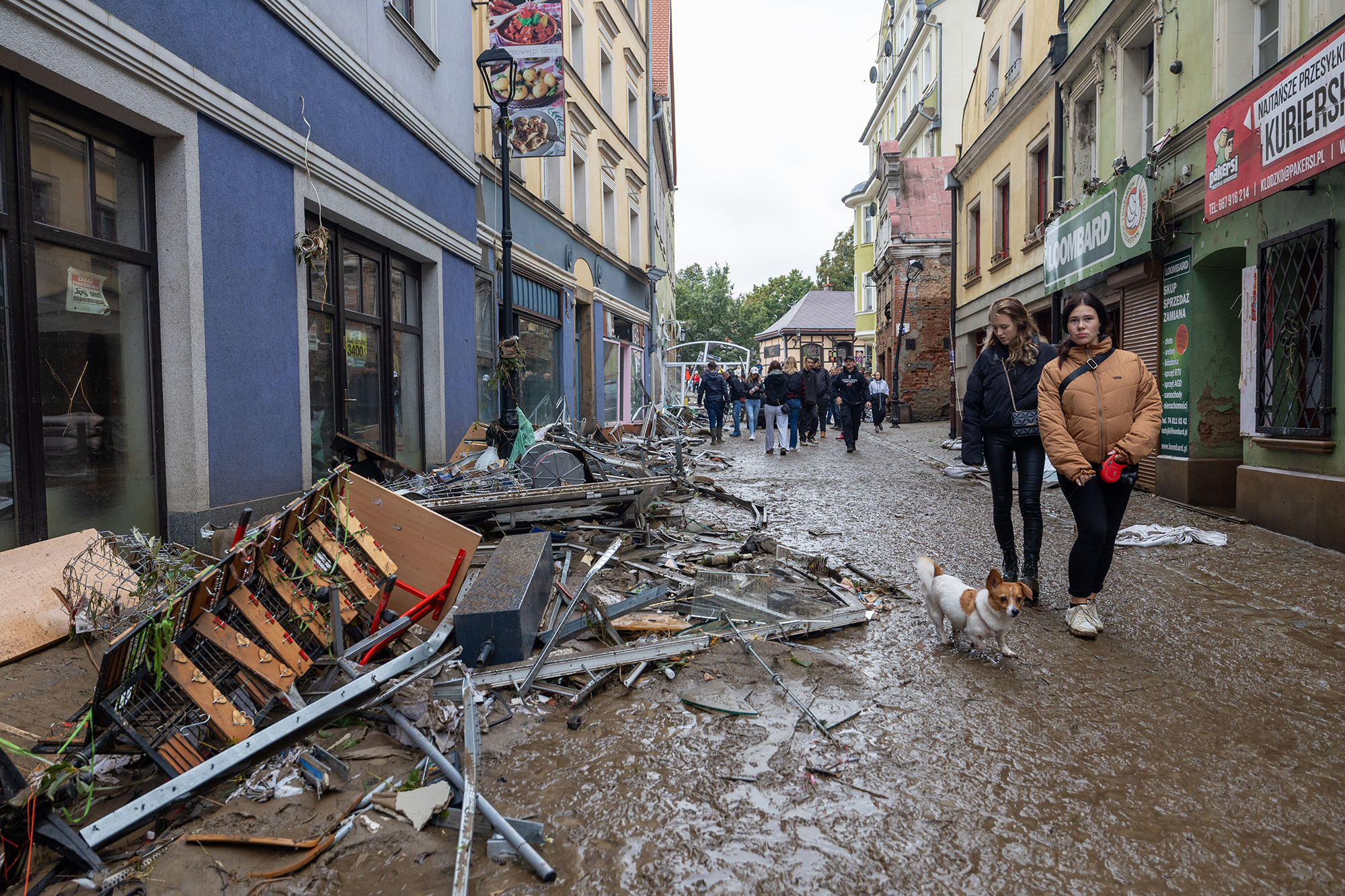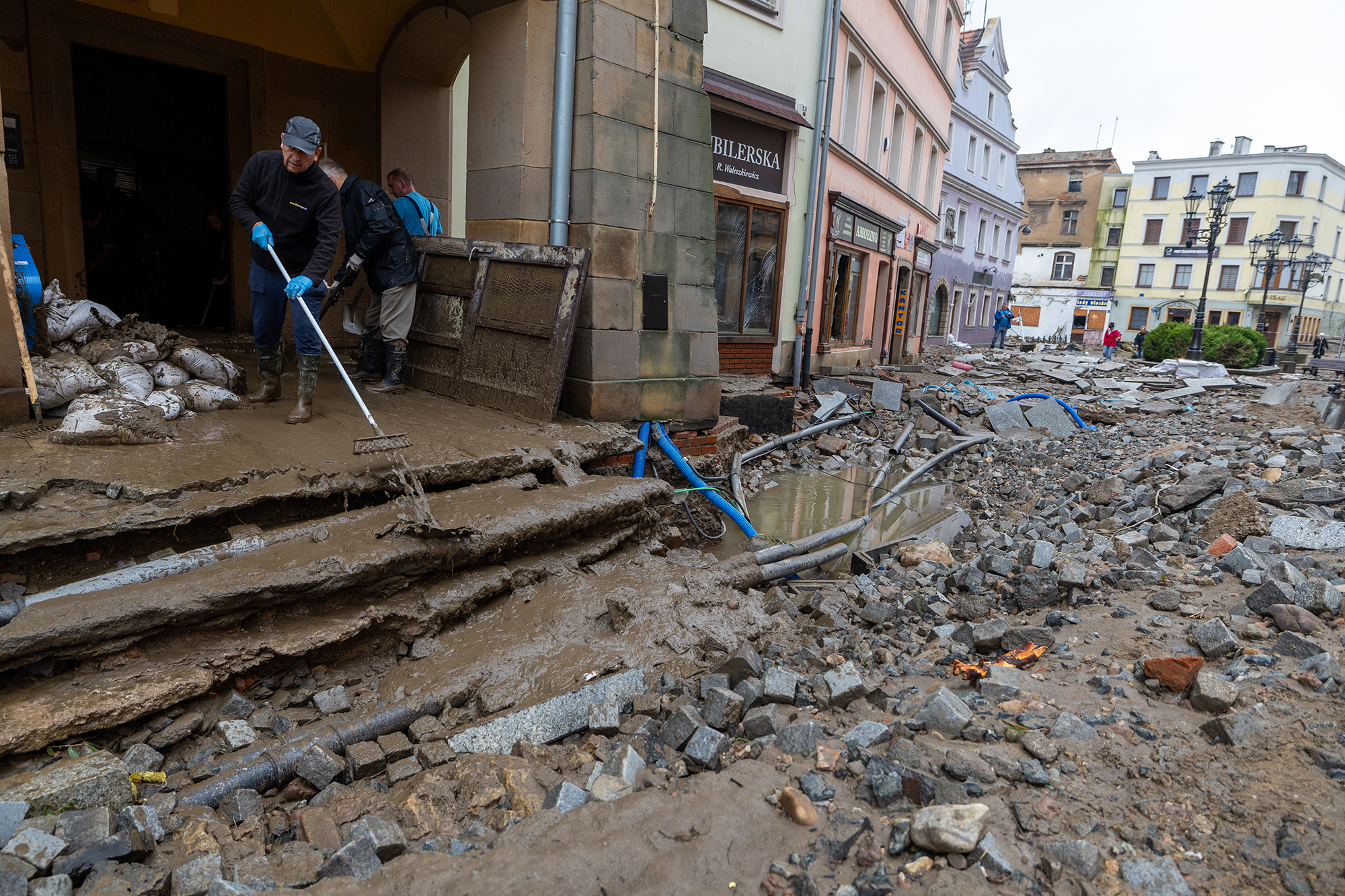Helicopter evacuation, threat to Wrocław, cities underwater: Key updates on floods in Poland
 Photo: Poland suffers from devastating flooding (Getty Images)
Photo: Poland suffers from devastating flooding (Getty Images)
Poland decided to expand the disaster zone in the southwestern regions amid the devastating floods. Meanwhile, Wrocław is currently under threat, and the authorities are trying to prevent the city from flooding.
Read more about the floods in Poland and the consequences in the report below.
Contents
- Disaster zone being expanded
- Most affected regions
- Wrocław before flood peak, preparations underway
- Number of victims
- Help for victims
Disaster zone being expanded
On September 16, Polish Prime Minister Donald Tusk declared a state of natural disaster for at least 30 days in parts of Lower Silesia, Opole, and Silesian voivodeships. This regime provides for restrictions on people's rights and freedoms: a ban on staying in certain places and forced evacuation. Yesterday, an urgent evacuation was launched from the town of Paczków, near which a dam burst due to heavy rainfall.
Today the Polish government decided to expand the disaster zone to the following settlements: Lubin, Dzierżoniów, Widnica, Opole, Krapkowice, Brzeg, and Kędzierzyn-Koźle, Minister of the Interior of Poland, Tomasz Siemoniak, said during a meeting of the crisis center.

Photo: Silt and mud on Polish streets (Getty Images)
The mayor of Lewin-Brzeski, Opole Voivodeship, Artur Kotara, called on residents to evacuate due to the overflow of water from the dams. He said that several streets were already flooded and the water was spreading throughout the city, and advised to take sleeping bags or blankets.
“After a while, it will be impossible to evacuate. The amount of water on the streets is growing. Cars will no longer be allowed to enter, except for military or fire trucks,” Kotara added.
Most affected regions
Kłodzko, Stronie Śląskie, and Głuchołazy were among the most affected by the disaster. Entire streets and houses were destroyed, and apartments were flooded. The water level exceeded several meters.
According to New Poland, almost all bridges in Lądek-Zdrój were destroyed, including the St. John's Bridge, which dates back to the 16th century. The structure withstood the flood of 1997, but this time the water was stronger. Now one can only reach the town from Czechia. There are tons of silt and mud on the streets. There is no telephone service or electricity, and there is a lack of drinking water.
Skala zniszczeń jest ogromna, ale na żołnierzy #WojskoPolskie zawsze można liczyć.
— Sztab Generalny WP (@SztabGenWP) September 16, 2024
Powodzianie nie zostawimy Was w potrzebie! pic.twitter.com/5KKiSgSybe
Residential areas, administrative buildings, schools, hospitals, and cemeteries are also flooded. Some settlements are completely cut off, and many people are locked in their homes. They had to be evacuated by helicopter. In Nysa, the hospital was evacuated, the staff and patients were urgently transferred to other medical facilities. Schools and offices were closed in the affected areas.
Wrocław before flood peak, preparations underway
Wrocław is one of the most vulnerable cities in southern Poland. Intense rainfall caused the water level in the river to rise rapidly, so there is a significant threat of flooding the city.
Local authorities have ordered to use sandbags to raise embankments and protect the residential areas of Marszowice-1 and Marszowice-2 from possible flooding by the Bystrzyca River, where the situation is most tense. Today they will start building fortifications there. The city will provide 1,100 tons of sand for the construction of fortifications.
Mayor Jacek Sutryk said that the embankments would be partially covered with plastic sheeting, and the military involved in the work would use bags to raise them. He also urged residents to move to higher floors of their homes if possible.
“The embankments should be raised by one and a half meters to protect the settlements. If the evacuation is needed, we will provide buses to the sites,” added Sutryk.
In another river of Wrocław, the Odra, the highest water level is likely to be expected on Friday, although the flood level may rise greatly from Wednesday.
Number of victims
So far, at least five people have died in Poland due to the disaster. Among the dead is Krzysztof Kaminski, a surgeon from Nysa. According to the media, he was returning from the hospital after a shift, and at some communication was lost. His car was found on one of the flooded streets. The 71-year-old man likely got out of the car to continue on foot - the driver's side door was open. Rescuers found the surgeon's body on the night of September 16.
Help for victims
Polish authorities have allocated a billion zlotys ($260 million) to help the victims. Anyone who suffered losses will be able to apply to local authorities for compensation.

Photo: compensation for flood victims in Poland will be available from today (Getty Images)
The victims will be paid 10 thousand zlotys ($2,567.95) in non-refundable aid, as well as up to 100 thousand zlotys ($25,149.70) for apartment repairs and up to 200 thousand zlotys ($50,299.40) for house reconstruction.
Last weekend, the storm Boris hit Central and Eastern Europe, causing heavy rains and flooding. The death toll from the storm in Europe has reached 16 and continues to rise. New casualties have been reported in Czechia, Poland, and Austria, while entire villages have been flooded in eastern Romania.
Polish journalist for Radio Reset Obywatelski, Igor Krawiec, told RBC-Ukraine's YouTube channel that the number of those affected by the storm could be in the tens of thousands. This is primarily about property, as water has reached the first floors in flooded settlements.
Sources: New Poland edition, polsatnews, rmf24, polskieradio24, pap.pl.

